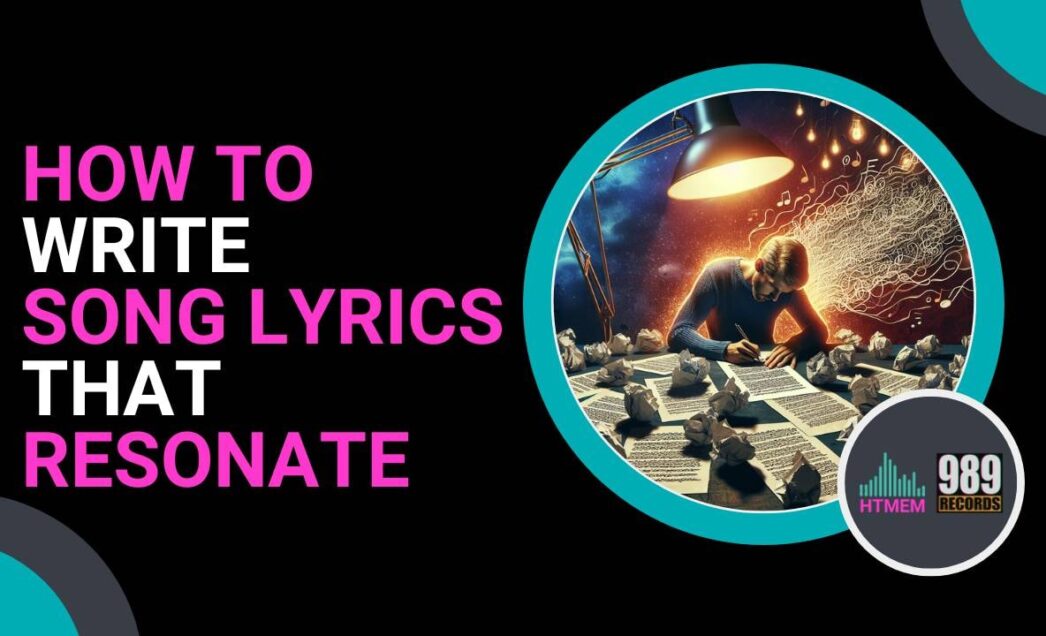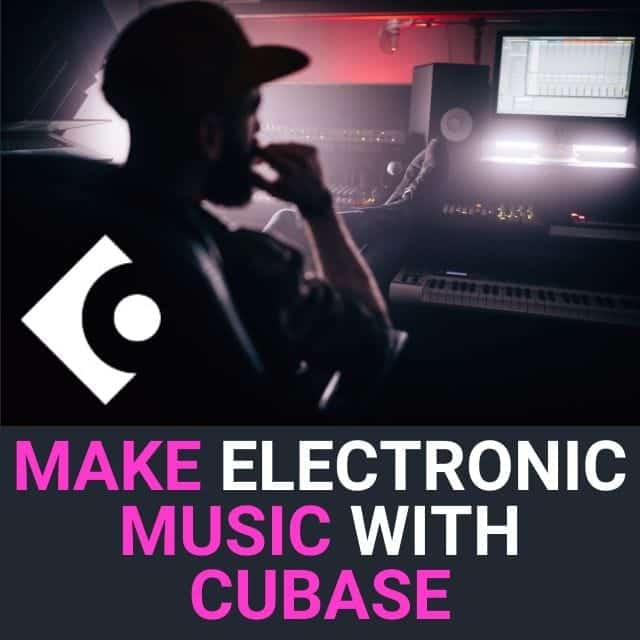Are you seeking straightforward guidance on how to write song lyrics that resonate with your audience? Our concise guide provides practical steps to transform your vision and emotions into captivating lyrics. From overcoming writer’s block to polishing your final verse, discover the tools and techniques to make your words come alive.
🔥 Prepare to delve into the art of lyric writing in a way that is both impactful and true to your unique voice.
Key Takeaways
- Bring authenticity and emotion to your lyrics by choosing themes and stories that resonate with you and your audience, striving for compelling imagery and genuine connection.
- Understand and experiment with song structure to create a smoothly flowing song, paying careful attention to creating an engaging chorus and memorable hooks.
- Master rhyme schemes and melodic synchronization in your lyrics for a rhythmic appeal, and refine through editing and constructive criticism to ensure maximum impact.
Table of Contents
Unleashing Your Lyrical Creativity: Start Writing Lyrics With Confidence
– Cultivating a Theme for Your Song
– Creating an Unforgettable Opening Line
– Developing a Hook That Sticks
The Blueprint of a Song: Understanding Song Structure
– Verse Magic: Building Your Song’s Foundation
– Chorus Building: Making Your Message Sing
– Bridge Building: Connecting Emotional Peaks
The Rhythm of Words: Mastering Rhyme Schemes and Flow
– Experimenting With Different Rhyme Patterns
– Syncing Lyrics With Melody
Sculpting the Soundscape: Matching Lyrics to Music
– Choosing the Right Chord Progression
– Melodic Molding: Fitting Words to Tunes
Polishing Your Lyricism: Editing for Impact
– Self-Review Techniques
– Seeking Constructive Criticism
From Pen to Performance: Finalizing Your Song Lyrics
– The Last Look: Revising with Purpose
– Bringing Lyrics to Life
Summary
FAQ
– What is the importance of having a theme in a song?
– What is the role of a chorus in a song?
– How can I make my lyrics flow smoothly?
– How can I match my lyrics to the music?
– How can I bring my lyrics to life during a performance?
Unleashing Your Lyrical Creativity: Start Writing Lyrics With Confidence
Envision songwriting as a landscape painting.
Your experiences, emotions, and unique perspectives are the vibrant colors that breathe life into your canvas. Every stroke of your brush, every line of your lyric, is an authentic manifestation of you. But let’s be honest, every artist encounters that invisible wall, the so-called writer’s block, at some point.
The secret is to embrace it, not evade it. Keeping a diary for ideas, co-writing, and pushing through this block can hone your skill in crafting compelling lyrics. To effectively write lyrics, it’s crucial to write often and use natural language, ensuring your words resonate authentically with the listener.
Great lyrics are energized with action, vivid imagery, and authenticity. Choosing stories and themes that ignite your passion will forge an emotional and genuine connection with your audience. After all, every hit song tells a unique story – your story, and good song lyrics can make all the difference in creating good songs.
Cultivating a Theme for Your Song
Think of a theme as the backbone of your song, a unifying concept that provides coherence to the lyrics. A clear thematic direction helps you stay focused and avoid adding elements that don’t contribute to the overall message. Some examples of themes for song ideas include:
- Love and relationships
- Heartbreak and loss
- Self-discovery and personal growth
- Social and political issues
- Dreams and aspirations
These themes can be a reflection of personal experiences, observations, or even abstract ideas.
As the writing process unfolds, your theme may evolve, leading to multiple songs exploring different aspects of the same theme. Themes that resonate personally or universally can deepen listeners’ connection to your song. Therefore, hold your theme dearly and allow it to navigate your lyrics.
Creating an Unforgettable Opening Line
The path to unforgettable lyrics begins with a captivating opening line. The first line is your listener’s gateway into the emotional landscape of your song. A strong opening line sets the stage for the entire song, establishing the central theme early on, and providing the right context for the rest of the lyrics.
Ensure your opening line counts, sings, and most importantly, hooks your listener from the very beginning.
Developing a Hook That Sticks
A hook is like the chorus of sirens in an ancient Greek epic – irresistible and unforgettable. It encapsulates the central idea, maintaining the focus of the tune and enhancing its memorability. The chorus of a song should be crafted as the lyrical and musical climax, representing the main message that listeners are meant to take away.
Consequently, your chorus should be shaped with repeated lyrics and melody to ensure it remains with listeners and prompts them to join in.
The Blueprint of a Song: Understanding Song Structure
Songwriting is a lot like building a house. Just as a house needs a strong foundation and a well-planned blueprint, a song needs a coherent structure. This structure is a beautiful interplay of elements like:
- Verses
- Pre-chorus
- Chorus
- Bridge
These elements are arranged in a way that makes the song flow smoothly, creating an unforgettable song title.
Experimenting with different song structures allows you to find the best format for your lyrics to flow smoothly. Effective song structures escort listeners on an emotionally satisfying journey, sustain their interest, and culminate in a potent emotional payoff. Hence, it’s worth examining the components of this blueprint more closely.
The Arranger Track feature in Cubase is a powerful tool that allows you to experiment with different arrangements, helping you discover the ideal structure for your song.
Learn How to Create Music With Cubase
Verse Magic: Building Your Song’s Foundation
The verse in your song is like the foundation of your house. It plays a critical role in conveying the main narrative of your song, establishing connections with listeners by delving deeper than the chorus. To effectively use verses for storytelling, map out your song’s narrative arc with a clear beginning, middle, and end, and craft verses that navigate each section of the narrative.
Creating a strong first verse is as crucial as laying a solid foundation for your house. It sets the stage for the song, captivating the listener’s attention, and laying the groundwork for the entire narrative that follows. Therefore, verses should be carefully constructed to bear the weight of your song’s narrative.
Chorus Building: Making Your Message Sing
The chorus is a critical part of your song – it is the part that holds the emotional core and engages the audience. It should be captivating and memorable. It’s where your main message sings out loud and clear, resonating with your listeners.
The last line of your song’s chorus is particularly pivotal as it serves as a closing statement that can leave a powerful impression, summarize your song’s theme, and echo the central message to resonate with audiences.
Consequently, your chorus should be skillfully crafted to pulsate with your song’s core rhythm.
Bridge Building: Connecting Emotional Peaks
Bridges in a song act as connectors, linking different sections and introducing new information to the narrative or structure. They provide a musical and lyrical break from the rest of the song, offering listeners a distinct contrast that keeps the song engaging. By introducing variation in melody and lyric content, the bridge heightens the overall emotional arc of the song, reinforcing its impact before returning to the chorus.
Thus, view the bridge as a secret weapon that connects emotional peaks and intensifies your song’s impact.
The Rhythm of Words: Mastering Rhyme Schemes and Flow
The rhythm of words in a song is like the rhythm of waves in the ocean – it carries you along, immersing you in its flow. Mastering rhyme schemes and flow creates engaging and memorable lyrics. Incorporating a consistent groove with stressed syllables and strong rhyme schemes enhances the rhythmic feel of a song, providing familiar patterns that listeners can latch onto.
Songwriters can craft intricate lyrics by using internal rhymes within lines and end-of-line rhymes, adding sophistication to the song’s structure. The pattern of familiar sounds naturally attracts our ears, and the use of rhymes incites an emotional response from listeners, enhancing the experience. Hence, it’s time to plunge into the sea of rhymes and rhythms, learning to surf the waves. 🏄🏽
Experimenting With Different Rhyme Patterns
Rhymes are the heartbeat of a song, driving its rhythm and flow. Common rhyme schemes used in songwriting include AA/BB, ABAB, and XAXA. Verses often follow these rhyme patterns, which help to progress the story and make the lyrics memorable.
Sounds confusing? Here are some examples:
- AA/BB – The sky above so vast and blue (A) My heart alight with thoughts of you (A) The journey long, the road is steep (B) In dreams is where our promises keep (B)
- ABAB – The morning light breaks, the dawn is near (A) In the silence, your voice I hear (B) Golden rays cast shadows wide (A) In their dance, our dreams collide (B)
- XAXA – The sun sets low, a fiery glow (X) A distant bell begins to toll (A) Nature’s brush paints the sky (X) Marking time as moments fly (A)
Syncing Lyrics With Melody
Just as a dancer moves in sync with the music, your lyrics should move in sync with the melody. Utilizing an instinctual approach to selecting rhyme schemes helps ensure they fit seamlessly with the melody’s rhythm. Moreover, employing strategic silence and pauses, in synchronization with chord progressions, can heighten drama and emotional expression in a song.
Therefore, allow your words to move rhythmically with your melody, producing a cohesive and captivating song.
Sculpting the Soundscape: Matching Lyrics to Music
Songwriting is a process of sculpture, where lyrics and music come together to shape a beautiful soundscape. To write song lyrics that resonate with listeners, it’s essential to consider how melody and chord progressions can elevate the lyrics by complementing the emotion behind them, contributing to the song’s overall impact. A melody with a clear beginning, climax, and end can provide a narrative arc that effectively conveys the song’s message, anchored by the lyrics. Understanding song form can further enhance the structure and flow of your composition. In the journey of writing song lyrics, it’s crucial to pay attention to these elements to create a memorable piece.
Moreover, melodies adhering to a specific scale are more coherent with the song structure, which can influence the effectiveness of the lyrical message. As a lyricist, you can enhance the synergy between music and words by assessing how well the chord structure and unique qualities of your song support the intended emotion in the lyrics. Thus, it’s time to engage in the process of aligning lyrics with music, shaping an enthralling soundscape.
Choosing the Right Chord Progression
Choosing the right chord progression is like choosing the right color palette for a painting – it sets the emotional tone. Each musical key has its own emotional personality, affecting how a song is perceived and aligns with the lyrics’ emotional tone. Understanding the emotional interplay between major and minor chords is crucial in fitting lyrics to a melody.
Therefore, choose your chords judiciously to form a harmonic backdrop that beautifully complements your lyrics.
Melodic Molding: Fitting Words to Tunes
Matching words to tunes is like fitting pieces of a puzzle together. Chord progressions should be constructed to match the scale of the melody, ensuring the musical coherence of the song. Beginning the songwriting process with a verse melody can streamline the creation of cohesive lyrics and melodies, naturally progressing towards a fitting chorus.
Experimentation is key here. Experiment with various melodic structures and allow time to assess their catchiness to determine the most impactful and memorable tune for your song. Also, remember to craft your lyrics within a vocal range of about two octaves to ensure the vocalist can comfortably sing the song.
Polishing Your Lyricism: Editing for Impact
Editing is not just about correcting errors; it’s about refining your emotions and aligning your lyrics for maximum impact. Editing for emotional depth necessitates a thorough comprehension of the individual song parts and their collective synergy. An open mind to new experiences and external feedback is essential in the lyric editing process as it may introduce fresh perspectives and improvements.
Don’t be hasty.
Spend ample time revising your lyrics, ascertaining every line radiates clarity and emotional depth. Bear in mind, your lyrics are your voice. It’s time to refine and amplify it. Recognizing the importance of editing in the process of writing songs is crucial, as it significantly contributes to the craft and quality of the final piece.
Self-Review Techniques
Self-review is an essential part of the songwriting process. During self-review, it’s critical that language and phrasing in lyrics sound as authentic and natural as if you were speaking. Each line of lyric must be clear in its intent and contribute to the overarching story of the song to ensure coherence.
Check for thematic consistency in most songs, making sure that all parts of the song focus on expanding the main message without introducing unrelated themes. Experimentation with rhyming patterns, like varying the scheme or placement of rhymes, is recommended to keep listeners engaged and prevent the lyrics from becoming monotonous.
Don your editor’s hat and commence refining those lyrics!
Seeking Constructive Criticism
Constructive criticism is like a mirror, reflecting your work from different perspectives. Seeking constructive criticism allows songwriters to identify specific areas in their lyric writing that could be improved, making it a crucial part of the songwriting process. When requesting feedback, look for criticism that aligns with your goals for the song and helps understand which elements of the lyrics are effective.
Constructive feedback should:
- Focus on suggestions for improvement
- Be presented in a manner that does not personally attack the songwriter
- Provide balanced feedback by objectively evaluating the quality of the work, regardless of personal taste
- Ensure that the criticism is fair and unbiased.
Embrace feedback and allow it to steer your lyric writing journey.
From Pen to Performance: Finalizing Your Song Lyrics
Finalizing your song lyrics is like preparing for a big performance. It’s not just about perfecting the words but also about preparing them for the stage or studio, ensuring each word is purposefully placed for maximum emotional effect. Through thorough preparation and repetition, an artist can memorize lyrics so that they can focus more on the emotional delivery rather than recall during performance. This journey of bringing one’s own songs to life, from the writing process to the stage, is a deeply personal and rewarding experience.
Dynamics in singing, such as varying volume and intensity, are crucial for conveying the emotional nuances of the song, making the performance more impactful. It’s time to finalize those lyrics and prepare for an unforgettable performance!
The Last Look: Revising with Purpose
The final revision of your lyrics is like the last rehearsal before the big performance. It’s not just a process of refinement, but also realignment to ensure that every word, line, and verse supports the song’s overall intent and theme. Analyzing the impact of each line in the context of the song helps determine if the words carry the emotional weight intended and contribute to the song’s purpose.
During revisions, it is important to consider the song’s dynamics, such as volume, tempo, and rhythm, and ensure that the lyrics are cohesive with these elements. Have one final look at your lyrics, revise intentionally, and let your song sparkle.
Bringing Lyrics to Life
Bringing your lyrics to life on stage is the final step of your songwriting journey. Body language plays a crucial role in this process, conveying the emotional depth of your lyrics during a performance. Incorporating physical movements and gestures can intensify the delivery of a song, helping the audience to connect with the lyrics’ emotions.
Expressive facial expressions serve as a powerful tool for singers to complement the emotion carried in the song lyrics. Deciding on the use of physical movements, including when and how to implement them, is a key part of preparing a song’s performance to ensure lyrics truly resonate.
It’s time to animate your lyrics and create an unforgettable performance!
Summary
We’ve set sail on a lyrical journey together, exploring the art and science of songwriting. From unleashing your creativity to understanding song structure, mastering rhyme schemes, matching lyrics to music, and perfecting your lyricism, we’ve covered it all. Remember, every song is a unique reflection of you, so stay authentic, be open to feedback, and most importantly, enjoy the creative process. Now, it’s time to let your words sing and make your mark in the world of music.
Frequently Asked Questions
What is the importance of having a theme in a song?
Having a theme in a song provides coherence to the lyrics and helps songwriters stay focused, while also allowing listeners to form a deeper connection with the song. It’s a unifying concept that brings the song’s message to life.
What is the role of a chorus in a song?
The chorus in a song serves as the heart where the main message is delivered and is articulated as the lyrical and musical climax, encouraging listeners to sing along.
How can I make my lyrics flow smoothly?
Experiment with different rhyme patterns and sync your lyrics with the melody to find the best fit for your song’s structure and flow. This can help you understand and master rhyme schemes, and create a smooth flow for your lyrics.
How can I match my lyrics to the music?
To match your lyrics to the music, ensure that your chord progressions align with the scale of the melody, creating musical coherence. Understanding the emotional interplay between chords and melody is key to achieving this.
How can I bring my lyrics to life during a performance?
You can do that by using body language, physical movements, and expressive facial expressions, which can intensify the delivery of a song and help the audience connect with the lyrics’ emotions.
Suggested Readings
Understanding EDM Electronic Music Essentials
The Gear Guide for Every EDM Musician
How Many Keys Are in a Piano
Practice and Enjoy!











